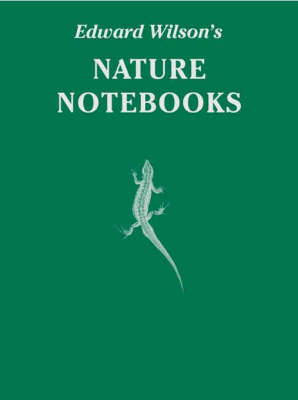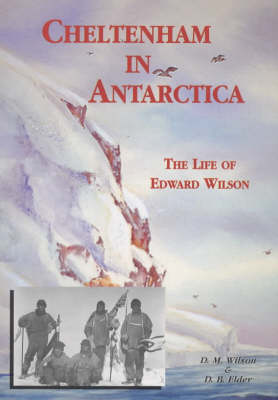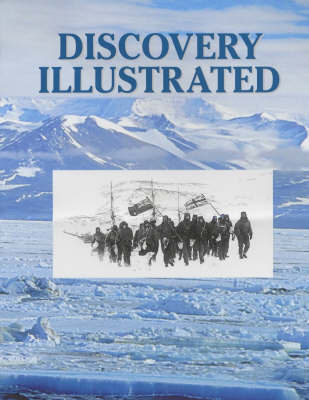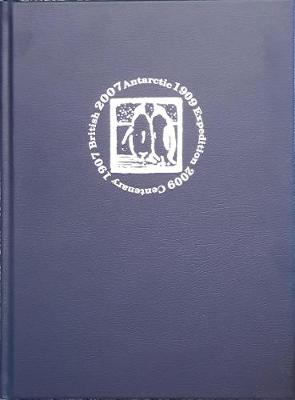Antarctic
4 total works
Edward Wilson is remembered as the artist of the British Antarctic Expedition of 1910-1912, led by Captain Robert Falcon Scott. The "Terra Nova" sailed via Madeira, South Trinidad, South Africa and Australia, to New Zealand; from where she set sail for the Antarctic on 24 January 1911. During the expedition Wilson studied and drew biological specimens, and made finished watercolours. The expedition reached the South Pole on 17 January 1912 after a journey of nearly a year. On the return journey the expedition hit unseasonably bad weather and Wilson died along with team members Scott and Bowers on 29 March. The specimens, diaries and sketchbooks were recovered by the search party the following Spring. It is probable that Edward Wilson's place in the history of art is as the last major painter of exploration art, an art form largely created by the fusion of science, cartography and art by William Hodges who had accompanied Captain Cook's second expedition from 1772-75. Hodges' work had been admired by Turner who was in turn admired by Wilson.
With the death of Wilson, the major media for recording feats of exploration passed primarily to photography and film and the aesthetic technique and vision was subsumed. Edward Wilson drew all his life, collecting his drawings into indexed volumes he called his "stock in trade". He used them as the basis for his illustrations of Barrett-Hamilton's "A History of British Mammals", and started to use them for illustrating W. Eagle Clarke's "A History of British Birds", a cancelled publication. After his death, his wife, Oriana, arranged the notebooks and distributed many of them amongst the family. Two books - the "Nature Notebooks" were given to his nephew, Michael Wilson, whose sons have edited this volume. It contains the bulk of Edward Wilson's non-Antarctic work - from the Notebooks and other sources - reproduced here in chronological order, showing his development as an artist. There is also a selection of quotations from the Notebooks' observations and annotations, in keeping with the scrapbook flavour of many of the pages.
Additionally, there is a short biography at the start of each chapter, concentrating on his scientific and artistic progress, and a selection of the Antarctic work so the reader can see the continuous artistic and scientific development.
With the death of Wilson, the major media for recording feats of exploration passed primarily to photography and film and the aesthetic technique and vision was subsumed. Edward Wilson drew all his life, collecting his drawings into indexed volumes he called his "stock in trade". He used them as the basis for his illustrations of Barrett-Hamilton's "A History of British Mammals", and started to use them for illustrating W. Eagle Clarke's "A History of British Birds", a cancelled publication. After his death, his wife, Oriana, arranged the notebooks and distributed many of them amongst the family. Two books - the "Nature Notebooks" were given to his nephew, Michael Wilson, whose sons have edited this volume. It contains the bulk of Edward Wilson's non-Antarctic work - from the Notebooks and other sources - reproduced here in chronological order, showing his development as an artist. There is also a selection of quotations from the Notebooks' observations and annotations, in keeping with the scrapbook flavour of many of the pages.
Additionally, there is a short biography at the start of each chapter, concentrating on his scientific and artistic progress, and a selection of the Antarctic work so the reader can see the continuous artistic and scientific development.
Edward Adrian Wilson is perhaps the most famous native son of Cheltenham. In the early years of the 20th century, he was one of the major influences and personalities of the heroic age of Antarctic exploration and has also been recognised as one of the top ranking ornithologists and naturalists in the UK during this period. He was also one of the last great scientific expedition artists. This is the illustrated story of polar explorer Edward Wilson, from his boyhood in Cheltenham to the diaries and letters associated with his last days as a member of Scott's ill-fated Antarctic expedition. All the royalties from this book will benefit the Wilson Collection Fund at the Cheltenham Art Gallery and Museums.
"Discovery Illustrated" is the story - primarily in pictures - of the Royal Research Ship 'Discovery' and the British National Antarctic Expedition in 1901-1904. 'Discovery' was built specifically for Antarctic journeying and captained by the young Commander Scott; this was the first major scientific exploration of the Antarctic continent. There are literally hundreds of photographs here, taking by several expedition members - mostly by Reginald Skelton, the Chief Engineer but also including Ernest Shackleton - and amazing paintings by Edward Wilson, alongside many drawings and other illustrations. There is enough in the way of historical background and maps to follow the journey but the story is really told through the journal entries of Skelton and Wilson. Their contrasting styles makes for fascinating reading - Skelton blowing off steam in a private diary whilst Wilson describes things for the benefit of the new wife he has left behind. Skelton the old sea-dog barely mentions the crossing of the Equator whilst Wilson, never having left Europe before, is initiated by King Neptune.
Once they reach the Antarctic, there are pictures of all they see as they explore along the Great Ice Barrier, take the first Antarctic balloon trip (remember, this is before the Wright Brothers!), and set up their winter quarters. They travel on long sledge journeys: Scott, Wilson and Shackleton traveling to over 82 degrees south, a new Furthest South; whilst Skelton joins a geologising journey to the new mountain ranges. There is also scientific work done throughout, learning about the weather, describing the animals, measuring gravity and seeking the South Magnetic Pole. In between, life on the ship is described, Shackleton editing the South Polar Times through the winter and all the crew participating in theatre and playing games on the ice. The quality of the photographs is amazing - many look as if they were taken yesterday - and cover the spread from the first ever photograph taken of an Emperor Penguin chick to pictures of the land discovered to snaps of the sledge dogs' puppies and of sailors in costume for their theatricals. The line drawings vary from brief sketches to extracts from the scientific reports.
Wilson's paintings are fabulous - from close-ups of an open-mouthed Albatross to other-worldly landscapes. The whole book is in date order, from the laying down of the ship's hull to their triumphant return to England, combining journal entries with photographs and paintings often on the same page. This gives the volume something of a 'scrap book' feel, a flavour of the excitement and adventure of scientific and geographical discovery. There is a final chapter which offers an assessment of the results and heritage of the expedition - and a reminder that you can visit the ship itself even now, a hundred years later, back in the Scottish city where it was built. This book is a great 'coffee table' book and a good introduction to a largely forgotten Antarctic expedition.
Once they reach the Antarctic, there are pictures of all they see as they explore along the Great Ice Barrier, take the first Antarctic balloon trip (remember, this is before the Wright Brothers!), and set up their winter quarters. They travel on long sledge journeys: Scott, Wilson and Shackleton traveling to over 82 degrees south, a new Furthest South; whilst Skelton joins a geologising journey to the new mountain ranges. There is also scientific work done throughout, learning about the weather, describing the animals, measuring gravity and seeking the South Magnetic Pole. In between, life on the ship is described, Shackleton editing the South Polar Times through the winter and all the crew participating in theatre and playing games on the ice. The quality of the photographs is amazing - many look as if they were taken yesterday - and cover the spread from the first ever photograph taken of an Emperor Penguin chick to pictures of the land discovered to snaps of the sledge dogs' puppies and of sailors in costume for their theatricals. The line drawings vary from brief sketches to extracts from the scientific reports.
Wilson's paintings are fabulous - from close-ups of an open-mouthed Albatross to other-worldly landscapes. The whole book is in date order, from the laying down of the ship's hull to their triumphant return to England, combining journal entries with photographs and paintings often on the same page. This gives the volume something of a 'scrap book' feel, a flavour of the excitement and adventure of scientific and geographical discovery. There is a final chapter which offers an assessment of the results and heritage of the expedition - and a reminder that you can visit the ship itself even now, a hundred years later, back in the Scottish city where it was built. This book is a great 'coffee table' book and a good introduction to a largely forgotten Antarctic expedition.
To celebrate the centenary of one of the most exciting expeditions of the Heroic Age of Antarctic exploration comes "Nimrod Illustrated". The book is a remarkable collage of expedition photographs, paintings and ephemera in a deliberate reminiscence of the expedition scrapbooks kept by so many of the expedition participants at the time. Many of the images are rarely seen, if ever before published, whilst others are better known.Together with quotations from the diaries of expedition participants, they tell the story of the British Antarctic Expedition 1907-1909 which saw the first use of ponies and motor cars in the Antarctic; achieved the first ascent of Mount Erebus; achieved the first attainment of the South Magnetic Pole; and, took Shackleton within 100 miles of the South Geographic Pole to attain a dramatic new 'Farthest South' record. This was the expedition that made Shackleton's name as an explorer and for which he was awarded his knighthood. Edited by Dr. D. M. Wilson, "Nimrod Illustrated" is a treat for anyone interested in Shackleton, the Antarctic, polar exploration or the atmosphere of the Edwardian age.
It is a part of the well regarded series commenced with "Discovery Illustrated: Pictures from Captain Scott's First Antarctic Expedition" (2001).
It is a part of the well regarded series commenced with "Discovery Illustrated: Pictures from Captain Scott's First Antarctic Expedition" (2001).



